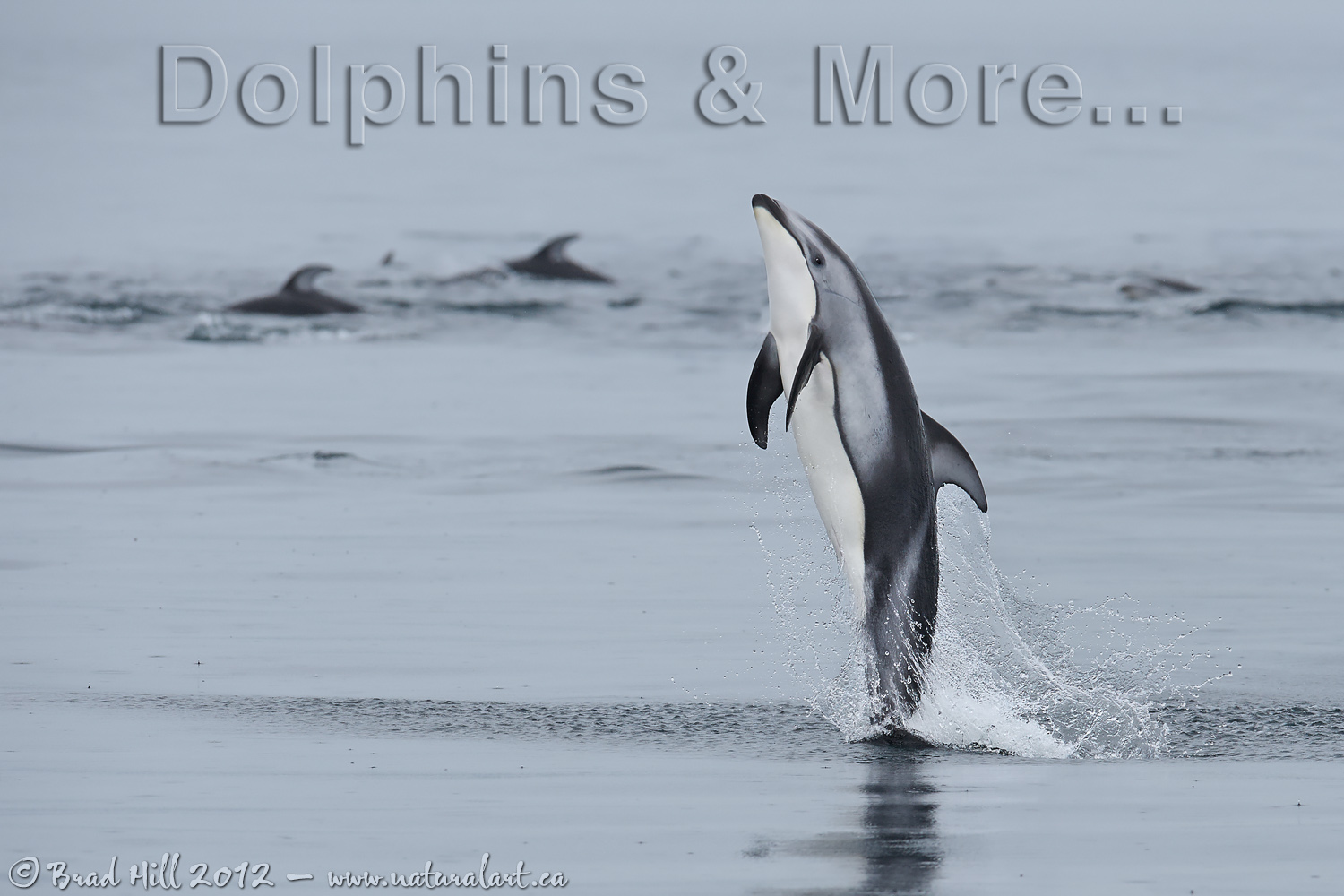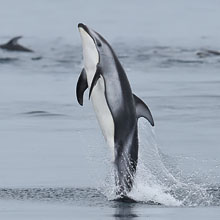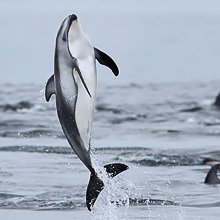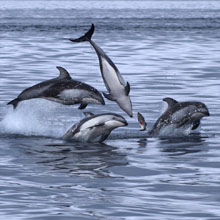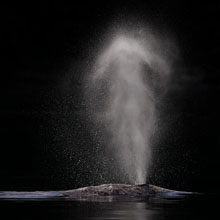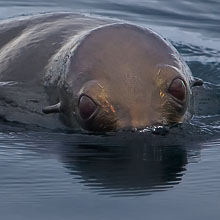Availability: Undetermined - Enquiries?
In the Field
Life's a Blast! Northern Vancouver Island, BC, Canada. August 23, 2012.
I don't know for sure why dolphins jump out of the water so much - but with how this one is giving me "the eye" so strongly, I wouldn't be surprised if at least ONE of the reasons is simply to get a better vantage point and see what's happening around them. I know I would be getting onto even thinner ice if I suggested that this dolphin might also be doing this just 'cuz it's a blast...so I won't do that! ;-)
I have said many times - and on occasion drawn criticism for it - that one incredibly important characteristic of a top-notch wildlife camera is having a high frame rate. By this I mean it must be capable of shooting at least at 8 frames per second. Whether you're shooting birds in flight, whales breaching, or dolphins just "having a blast", your chances of catching the image at just the right time go way up (in direct proportion to the frame rate increase) with a camera with a high frame rate. And, if you shoot professionally (or aspire to), you can end up with a significantly higher number of salable images with a camera capable of a high frame rate (and if I just gave many of you an argument to take to your accounting department - at home or in the office - about why that D4 or 1D-X is a good investment...well...you're welcome!).
Here's a higher resolution (2400 pixel) version of this dramatic action:
• Life's a BLAST! Download 2400 pixel image (JPEG: 964 KB)
ADDITIONAL NOTES:
1. This image - in all resolutions - is protected by copyright. I'm fine with personal uses of it (including use as desktop backgrounds or screensavers on your own computer), but unauthorized commercial use of the image is prohibited by law. Thanks in advance for respecting my copyright!
2. Like all wildlife photographs on this website, this image was captured following the strict ethical guidelines described in The Wildlife FIRST! Principles of Photographer Conduct. I encourage all wildlife photographers to always put the welfare of their subjects above the value of their photographs.
3. This image was captured during my "Humpback, Orcas, Sea Lions & More" photo tour in August of 2012. Each year I offer trips into two different parts of the Great Bear Rainforest as well as one to photograph aquatic mammals and oceanscapes near the northern tip of Vancouver Island. And, in selected years, I also offer photo tours to locations to capture other highly sought-after subjects, such as various owl species of the boreal forest and wildlife of Canada's Arctic. Details about these trips can be found on the Photo Tours page of this website.
Behind the Camera
Life's a Blast! Northern Vancouver Island, BC, Canada. August 23, 2012.
Digital Capture; Compressed RAW (NEF) 14-bit format; ISO 1400.
Nikon D4 paired with Nikkor 400mm f2.8G VR prime lens - hand held from sailboat. VR on and in normal mode.
1/2000s @ f8; +1.0 stop compensation from matrix-metered exposure setting. Auto ISO engaged with shutter speed set to 1/2000s.
At the Computer
Life's a Blast! Northern Vancouver Island, BC, Canada. August 23, 2012.
RAW Conversion to 16-bit TIFF, including first-pass/capture sharpening and light noise reduction using Capture One Pro Version 7. Two raw variants (processed from raw) differing by a total of 0.5 stops in exposure.
Further digital corrections on resulting 16-bit TIFF files using Adobe's Photoshop CS6 and Light Craft's Lightzone. Photoshop adjustments included compositing the raw conversion exposure variants, selective minor tweaks to exposure, selective colour saturation and desaturation, and selective sharpening for web output. Final tone tweaking performed using tonemapper/re-light tool in Lightzone.
Conservation
Life's a Blast! Northern Vancouver Island, BC, Canada. August 23, 2012.
Ten percent of the revenue generated by this image will be donated to Raincoast*.
Species Status in Canada**: Not listed as Endangered, Threatened, or of "Special Concern"
Nicknamed the "Lag", the Pacific White-sided Dolphin (Lagenorhynchus obliquidens) is known for its exuberance and is one of the liveliest dolphins in the northern Pacific. They commonly leap clear of the water, perform flips and somersaults, and will often approach and ride the bow waves of ships.
Lags will often form schools of 1,000 or more individuals. Their social lives are dynamic, with groups frequently joining together and breaking apart. Even though both sharks and killer whales commonly feed on them, they frequently have long life spans and some have lived for 40 or more years in the wild!
*The Raincoast Conservation Society (and Foundation) is an effective and efficient organization that has been fighting for protection of this unique habitat. If you are looking for a meaningful way to contribute to the conservation of this amazing ecosystem, Raincoast will provide maximal "bang" for your conservation dollars.
**as determined by COSEWIC: The Committee on the Status of Endangered Wildlife in Canada












